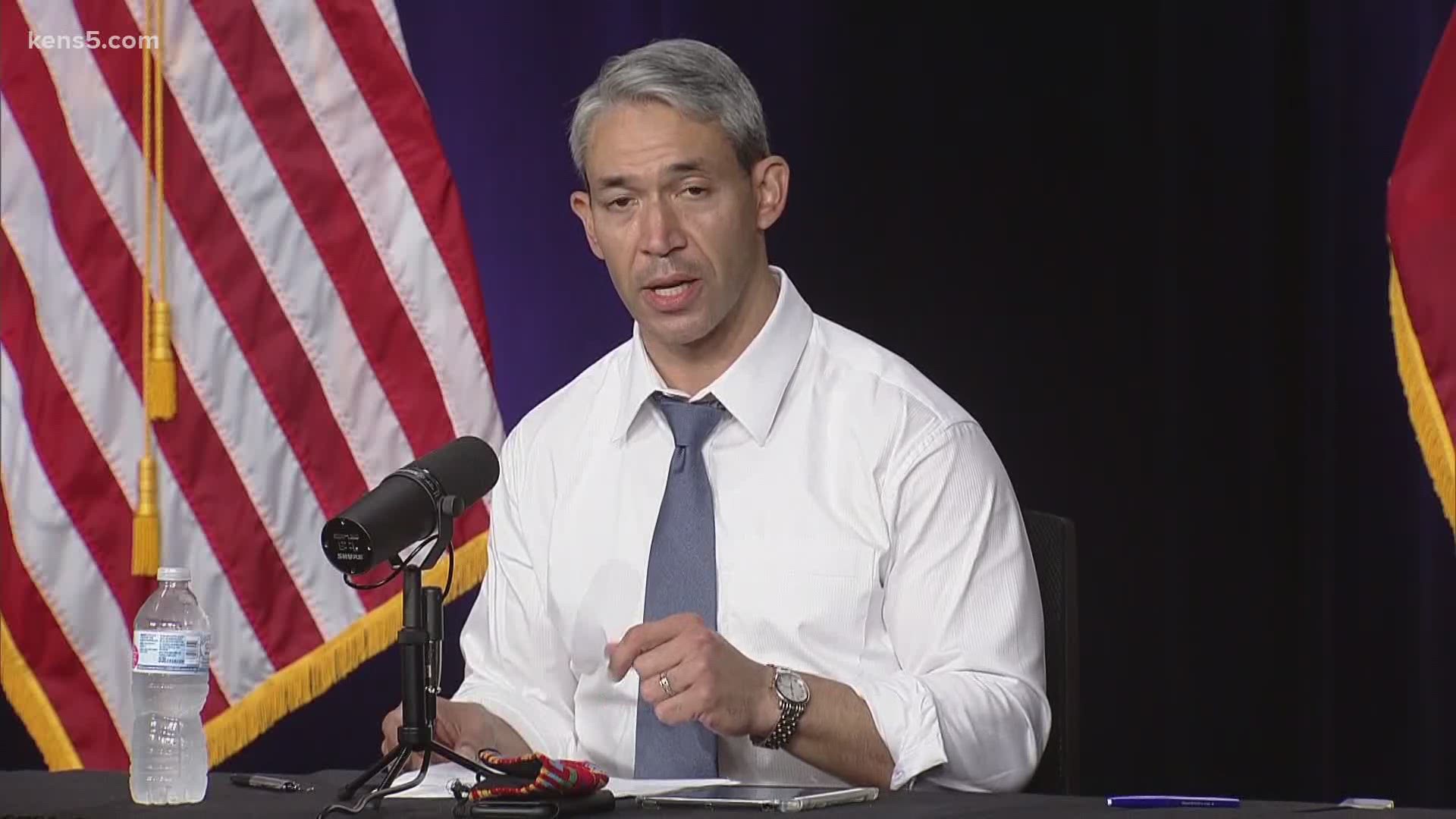SAN ANTONIO — We're tracking the latest numbers from the coronavirus pandemic in San Antonio and across Texas. Here are the latest numbers reported by Bexar and surrounding counties:
- Bexar County: 325 new cases were reported Thursday, bringing the total number for the county to 41,939. The county death toll, meanwhile, rose to 406 after a dozen additional fatalities were reported.
- Comal County: The county reported 26 new cases on Thursday while its death toll remained at 60. There have been a total of 2,313 cases of COVID-19 in the county. Of those, county officials say, 424 are active coronavirus cases, and 1,829 residents have recovered.
- Hays County: Officials in Hays County on Thursday reported show 20 new cases in the county and no additional virus-related deaths. As of Thursday evening, there were a total of 4,989 lab-confirmed cases in the county (2,829 of which were active) while the death toll stodd at 34. 117 county residents have been hospitalized with the virus.
How Bexar County is trending
We're tracking how many coronavirus cases are confirmed in Bexar County each day from the time San Antonio Metro Health began reporting cases more than five months ago. Graphing those daily case numbers along a 14-day moving average provides an accurate picture of the curve in the San Antonio area and the direction we're heading amid the coronavirus.
On Thursday, Mayor Ron Nirenberg reported 325 more cases of the novel coronavirus in Bexar County, keeping with this week's trend of lower daily totals relative to June and July. The county total is up to 41,939.
However, the mayor also confirmed a dozen additional deaths from coronavirus-related complications, bringing the death toll to 406 for the county.

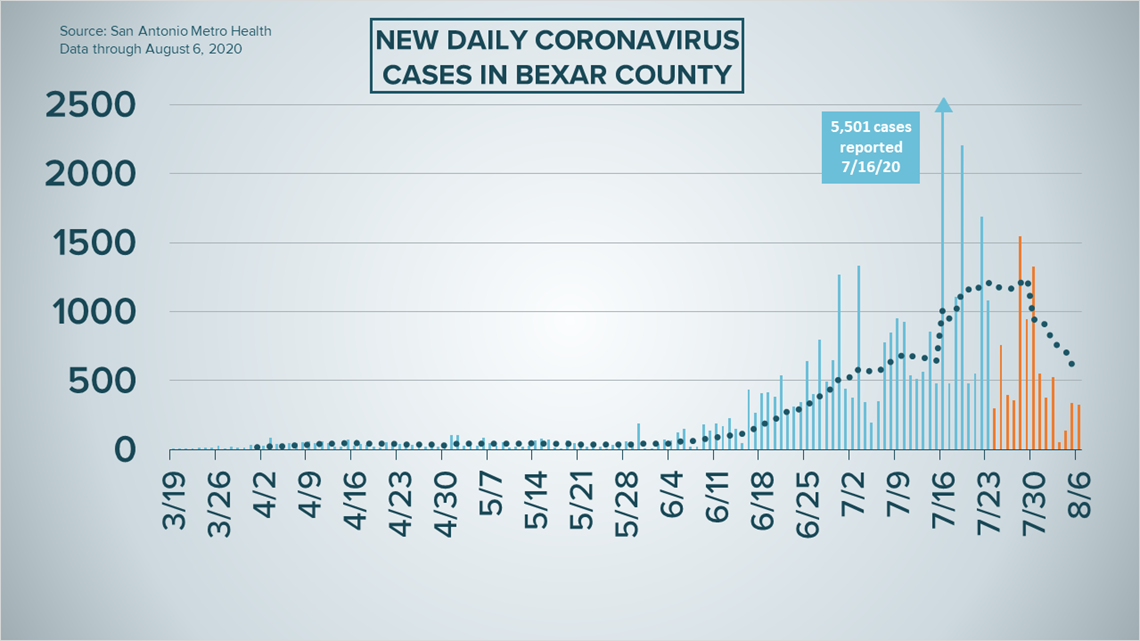
Hospitalizations continue to go down for Bexar County. Nirenberg said 801 county residents were receiving treatment for COVID-19 on Thursday, down from 817 on Wednesday. The number of patients using ventilators (238) remained unchanged while the number of patients in intensive care (345) is up slightly from Wedneday.

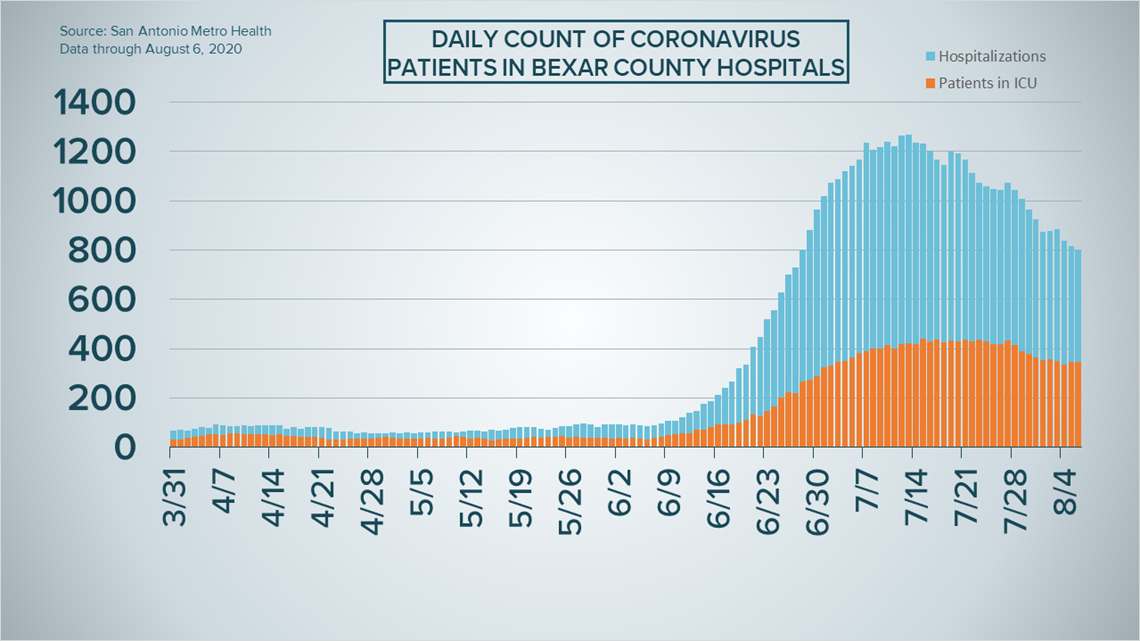
Coronavirus in Texas
Texas health authorities on Thursday reported an additional 7,598 cases of the novel coronavirus in communities across the state—the third straight day of lowering case totals.

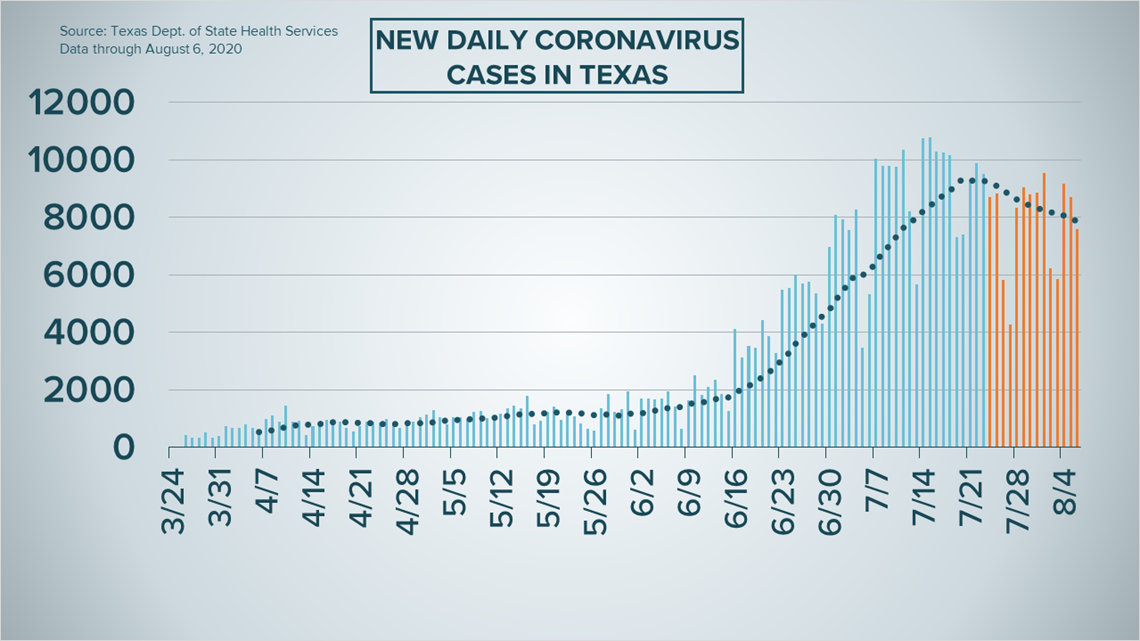
However, after fewer than 250 deaths for the past four days, fatalities jumped by 306 on Thursday. In all, 7,803 Texans have lost their lives to COVID-19 complications as of Thursday.

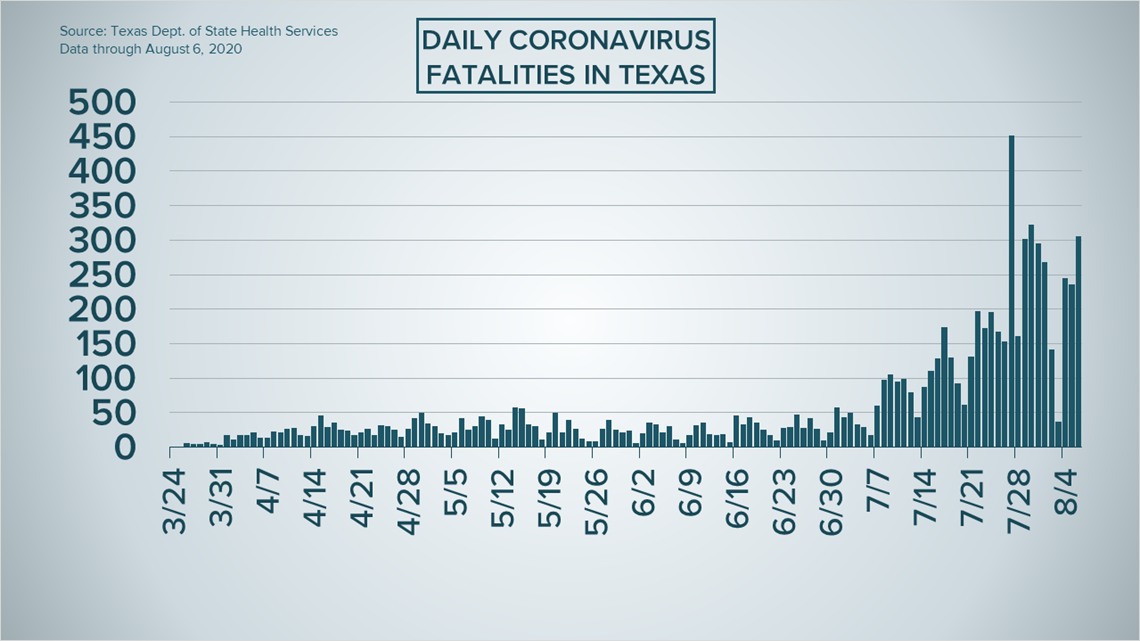
Hospitalizations continued to trend a positive direction as the overall number of Texans receiving treatment for COVID-19 decreased once again on Thursday, to 8,302. The last time the number was that low was July 5.
Latest Coronavirus Headlines
- 66 players opt out of NFL season due to coronavirus pandemic
- 'We need a miracle' | Family of EISD secretary asks for prayers as she battles coronavirus
- Border Patrol Agent remembered who died from coronavirus
- Gov. Abbott urges Texans to prepare for flu season amid COVID-19 pandemic
- 1.2 million seek unemployment after $600 federal check ends
- No hoopla: Coronavirus upends Trump, Biden convention plans
- Wear The Gown: Coronavirus and childbirth
- Why it's important to have a plan for your pets during the pandemic
- Convalescent plasma donation gave son chance to say good-bye to father
Coronavirus symptoms
The symptoms of coronavirus can be similar to the flu or a bad cold. Symptoms include fever or chills, cough, shortness of breath or difficulty breathing, fatigue, muscle or body aches, headache, new loss of taste or smell sore throat, congestion or runny nose, nausea or vomiting and diarrhea, according to the Centers for Disease Control.
Most healthy people will have mild symptoms. A study of more than 72,000 patients by the Centers for Disease Control in China showed 80 percent of the cases there were mild.
But infections can cause pneumonia, severe acute respiratory syndrome, kidney failure, and even death, according to the World Health Organization. Older people with underlying health conditions are most at risk.
On June 25, the CDC expanded the list of groups at a higher risk of severe illness due to coronavirus.
Experts determined there was consistent evidence these conditions increase a person's risk, regardless of age:
- Chronic kidney disease
- COPD (chronic obstructive pulmonary disease)
- Obesity (BMI of 30 or higher)
- Immunocompromised state (weakened immune system) from solid organ transplant
- Serious heart conditions, such as heart failure, coronary artery disease, or cardiomyopathies
- Sickle cell disease
- Type 2 diabetes
The CDC believes symptoms may appear anywhere from two to 14 days after being exposed.
Human coronaviruses are usually spread...
- Between people who are in close contact with one another (within about 6 feet).
- Through respiratory droplets produced when an infected person coughs, sneezes or talks. These droplets can land in the mouths or noses of people who are nearby or possibly be inhaled into the lungs.
- Some recent studies have suggested that COVID-19 may be spread by people who are not showing symptoms.
Help stop the spread of coronavirus
- Stay home when you are sick.
- Eat and sleep separately from your family members
- Use different utensils and dishes
- Cover your cough or sneeze with your arm, not your hand.
- If you use a tissue, throw it in the trash.
Lower your risk
- Wash your hands often with soap and water for at least 20 seconds. If soap and water are not available, use an alcohol-based hand sanitizer.
- Avoid touching your eyes, nose, and mouth with unwashed hands.
- Avoid close contact with people who are sick.
- Clean and disinfect frequently touched objects and surfaces.
- The CDC recommends wearing a mask or cloth face covering if you have to be out due to an essential service or essential activity such as going to the grocery store.
- If you are 60 or over and have an underlying health condition such as cardiovascular disease, diabetes or respiratory illnesses like asthma or COPD, the World Health Organization advises you to try to avoid crowds or places where you might interact with people who are sick.

